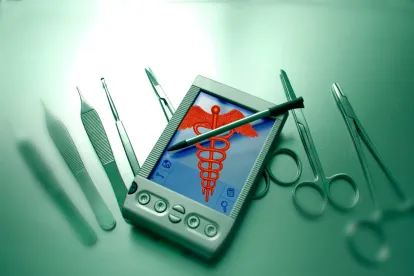On April 23, 2014, FDA announced the availability of a draft guidance that describes FDA’s proposal for a new, voluntary program designed to expedite patient access to certain medical devices that are intended for unmet medical needs and are subject to premarket approval (PMA) applications. FDA requests that parties submit comments within 90 days of publication (by July 22, 2014).
The proposed program entitled “Expedited Access PMA for Unmet Medical Needs for Life Threatening or Irreversibly Debilitating Diseases or Conditions,” or “EAP” program, is focused on reducing the time associated with product development and premarket review for eligible devices (“EAP Devices”). The EAP program features more interactive engagement with FDA during the premarket development and review process.
The EAP program is a distinct program for medical devices that builds upon FDA’s experience with other programs. Specifically, FDA’s proposed EAP Program utilizes certain features from CDRH’s Innovation Pathway, a program that FDA launched in 2011 designed to help expedite the development and review of breakthrough medical devices. The EAP Program is also based upon FDA’s experience with the Expedited Programs for Serious Conditions for drugs and biologics.
Eligibility for EAP Program
In order to be eligible for the EAP program, the device should be intended to treat or diagnose a life- threatening or irreversibly debilitating disease or condition. “Life threatening” is defined as a high likelihood of death unless the disease course is interrupted. “Irreversibly debilitating” means a morbidity that has substantial impact on day-to-day functioning. FDA notes that short-lived and self- limiting morbidities will usually not be sufficient.
In addition, the sponsor should demonstrate that the device meets one of the following four criteria: (1) the device represents a breakthrough technology that provides a clinically meaningful advantage over existing technology; (2) no approved alternative treatment or means of diagnosis exists; (3) the device offers significant, clinically meaningful advantages over existing approved alternatives; or (4) the availability of the device is in the best interest of patients (e.g., addresses an unmet medical need). These criteria are based on the priority review criteria in Section 515(d)(5) of the Federal Food, Drug, and Cosmetic Act (FD&C Act).
Sponsors should also submit to FDA an acceptable draft Data Development Plan that describes the data that will be collected premarket and postmarket, as well as a rationale for collecting data in the postmarket setting (rather than premarket).
Benefit-Risk Considerations
FDA notes in the draft guidance that the Agency intends to work with the sponsor within the benefit- risk framework discussed in FDA’s 2012 Benefit-Risk Guidance to determine whether certain data for EAP Devices may be collected postmarket rather than premarket. FDA also indicates in the draft guidance that the Agency may accept less certainty regarding the benefit-risk profile of EAP Devices at the time of premarket approval, as long as the uncertainty is sufficiently balanced by probable benefits of the device and postmarket controls.
However, the Agency emphasizes throughout the draft guidance that EAP Devices will still need to meet the statutory standard of reasonable assurance of safety and effectiveness for premarket approval. In addition, in an FDA news release announcing the new program, the Agency emphasizes that the EAP program is “not a new pathway to market, but rather a collaborative approach to facilitate product development under the agency’s existing regulatory authorities.”
Benefits of the EAP Program
Additional Interactive Premarket Communications and Review. This may include additional FDA guidance on efficient device development, as well as more interactive communications during the development stage, and greater interactive review of investigational device exemptions and PMA applications.
Senior Management Involvement and Case Manager. FDA may involve senior management in a “proactive, collaborative, cross-disciplinary review,” and the Agency may assign a case manager to coordinate the review.
Priority Review. The EAP device will likely receive priority review under Section 515(d)(5) of the FD&C Act.
Data Development Plan. FDA intends to work with the sponsor on a Data Development Plan for the device, which outlines the premarket and postmarket data collection for the device.
Manufacturing. In certain circumstances, FDA may allow a sponsor of an EAP Device to provide less manufacturing information in the PMA application than what is usually requested by the Agency for PMA approval. The draft guidance also describes the circumstances under which FDA may conduct an inspection of the manufacturing site after approval of the device, instead of inspecting as part of premarket review.National
Types of Clinical Evidence
The draft guidance describes certain types of clinical evidence that may be used to support a PMA submission as part of the EAP program. FDA notes in the draft guidance that the use of these types of data are not a criterion for the program.
FDA describes the use of intermediate endpoints and surrogate endpoints as a basis for PMA approval. The draft guidance includes definitions of these types of endpoints and examples. FDA notes in the guidance that an intermediate or surrogate endpoint may only be used as a basis for approval “on the condition that remaining uncertainty about the predictive relationship between a surrogate and clinical benefit is minimized through confirmatory post-approval studies or on the condition that clinical benefit is verified through confirmatory post-approval studies.”
Other types of data that is discussed include “two-phase studies,” where approval is based upon premarket study results that meet a pre-specified criterion or a pre-specified significance level, and the remaining confirmatory data are obtained after approval. In addition, the draft guidance discusses types of clinical evidence for in vitro diagnostics.
Requesting an EAP Designation
Attachment 1 of the draft guidance describes the process for requesting participation in the EAP program. Sponsors should submit a Pre-Sub for EAP Designation. After reviewing the Pre-Sub, FDA will issue written notification to the sponsor regarding whether FDA will grant EAP Designation to the device.
If FDA determines the device is not eligible, or that more information is needed, FDA will send written feedback to the sponsor. If designation is granted, FDA will work with the sponsor to refine the draft Data Development Plan. FDA retains the right to revoke an EAP Designation at any time if the device loses its eligibility under the EAP criteria, or if the information submitted to FDA in connection with the EAP request or premarket submission contain untrue statements or omitted material information.




 />i
/>i

